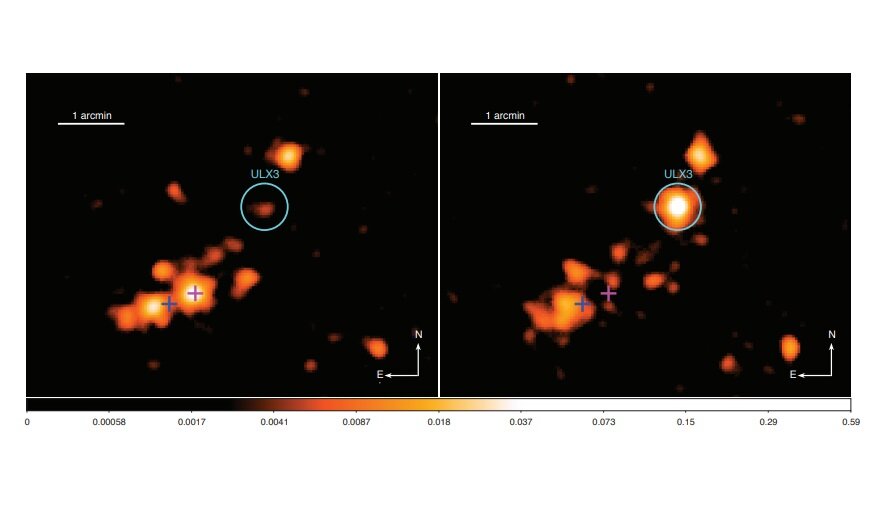New transient ultraluminous X-ray source detected in the galaxy NGC 7090
NOVEMBER 27, 2020 REPORT
by Tomasz Nowakowski , Phys.org

Swift XRT images (0.3–10.0 keV) of NGC 7090, produced with the online XRT pipeline (Evans et al. 2009), taken over the lifetime of the mission prior to our monitoring campaign (left) and during our campaign (spread throughout 2019–2020; right). The position of the newly discovered ULX3 is shown with the cyan circle. Credit: Walton et al., 2020.
An international team of astronomers has identified a new ultraluminous X-ray source (ULX) in the galaxy NGC 7090. The object, designated NGC 7090 ULX3, was found using NASA's Swift spacecraft. The finding is detailed in a paper published November 17 on the arXiv pre-print repository.
ULXs are point sources in the sky that are so bright in X-rays that each emits more radiation than a million suns emit at all wavelengths. They are less luminous than active galactic nuclei, but more consistently luminous than any known stellar process. Although numerous studies of ULXs have been conducted, the basic nature of these sources still remains unsolved.
Usually there is one ULX per galaxy in galaxies which host them, however some galaxies were found to contain many such sources. At a distance of about 31 million light years from the Earth, NGC 7090 is one of such galaxies. Previous observations have found that it hosts two highly variable and transient ULXs, which received designations NGC 7090 ULX1 and NGC 7090 ULX2.
Now, based on the observations conducted with Swift, astronomers led by Dominic Walton of the University of Cambridge, UK, report the detection of another ULX in NGC 7090 in a new study. The research was complemented by data from NASA's Nuclear Spectroscopic Telescope Array (NuSTAR) and Chandra space telescopes, as well as ESA's XMM-Newton satellite.
More:
https://phys.org/news/2020-11-transient-ultraluminous-x-ray-source-galaxy.html
